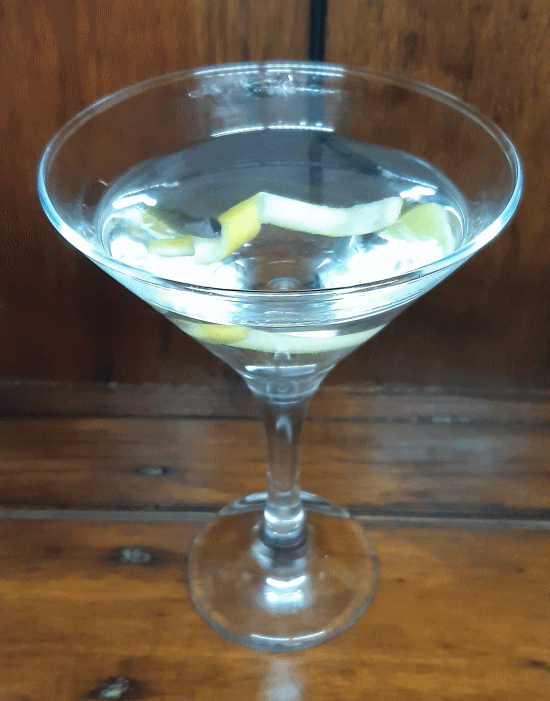The martini is a cocktail made with gin and vermouth, and garnished with an olive or a lemon twist. Over the years, the martini has become one of the best-known mixed alcoholic beverages.
H. L. Mencken called the martini “the only American invention as perfect as the sonnet”, and E. B. White called it “the elixir of quietude”.
The exact origin of the martini is unclear. The name may derive from the Martini brand of vermouth. Another popular theory suggests it evolved from a cocktail called the Martinez served sometime in the early 1860s at the Occidental Hotel in San Francisco, which people frequented before taking an evening ferry to the nearby town of Martinez, California. Alternatively, residents of Martinez say a bartender in their town created the drink, while another source indicates that the drink was named after the town.
Numerous bartending guides of the late 19th century contained recipes for cocktails similar to the modern-day martini. For example, Harry Johnson’s Bartenders’ Manual (1888) listed a recipe for a “Martini Cocktail” that consisted in part of half a wine glass of Old Tom gin and a half a wine glass of vermouth.
Fill the glass up with ice
2 or 3 dashes of gum syrup
2 or 3 dashes of bitters; (Boker’s genuine only)
1 dash of Curaçao
1⁄2 wine glassful [1 fl oz] of Old Tom gin
1⁄2 wine glassful [1 fl oz] of [sweet/Italian] vermouth
Stir up well with a spoon, strain it into a fancy cocktail glass, squeeze a piece of lemon peel on top, and serve.The first dry martini is sometimes linked to the name of a bartender who concocted the drink at the Knickerbocker Hotel in New York City in 1911 or 1912. The “Marguerite Cocktail”, first described in 1904, could be considered an early form of the dry martini, because it was a 2:1 mix of Plymouth dry gin and dry vermouth, with a dash of orange bitters.
During Prohibition in the United States, during the mid-20th century, the relative ease of illegal gin manufacture led to the martini’s rise as the locally predominant cocktail. With the repeal of Prohibition, and the ready availability of quality gin, the drink became progressively drier. In the 1970s and ’80s, the martini came to be seen as old-fashioned and was replaced by more intricate cocktails and wine spritzers, but the mid-1990s saw a resurgence in the drink and numerous new versions.
Martini (cocktail) – from Wikipedia, the free encyclopedia
For this recipe I’m using a “classic” Martini recipe, although one that differs from the one above.

A classic Martini of two only ingredients.
Place two ice cubes in a mixing jug.
Add liquid ingredients and stir well.
Strain into a cocktail glass.
Twist lemon to release oils and drop into the glass.
Ingredients
Directions
Place two ice cubes in a mixing jug.
Add liquid ingredients and stir well.
Strain into a cocktail glass.
Twist lemon to release oils and drop into the glass.
